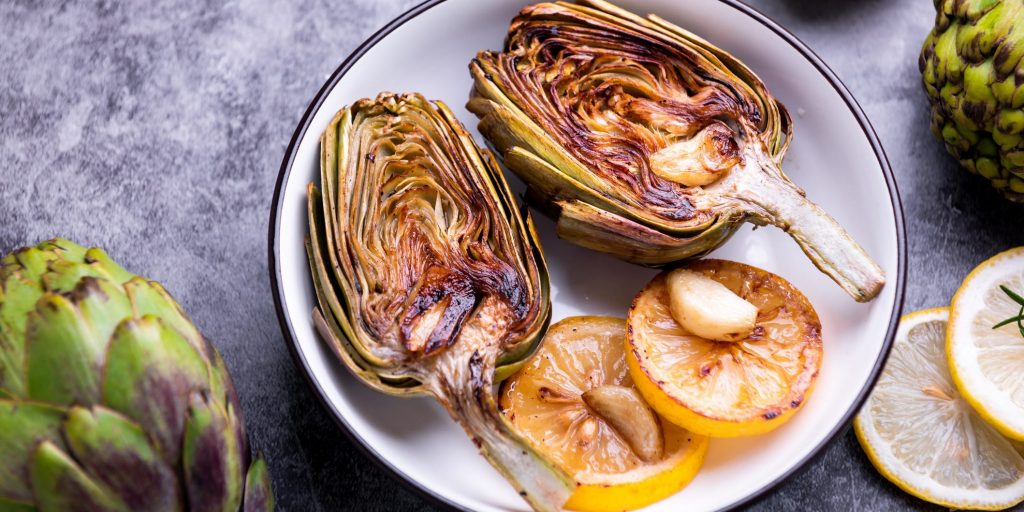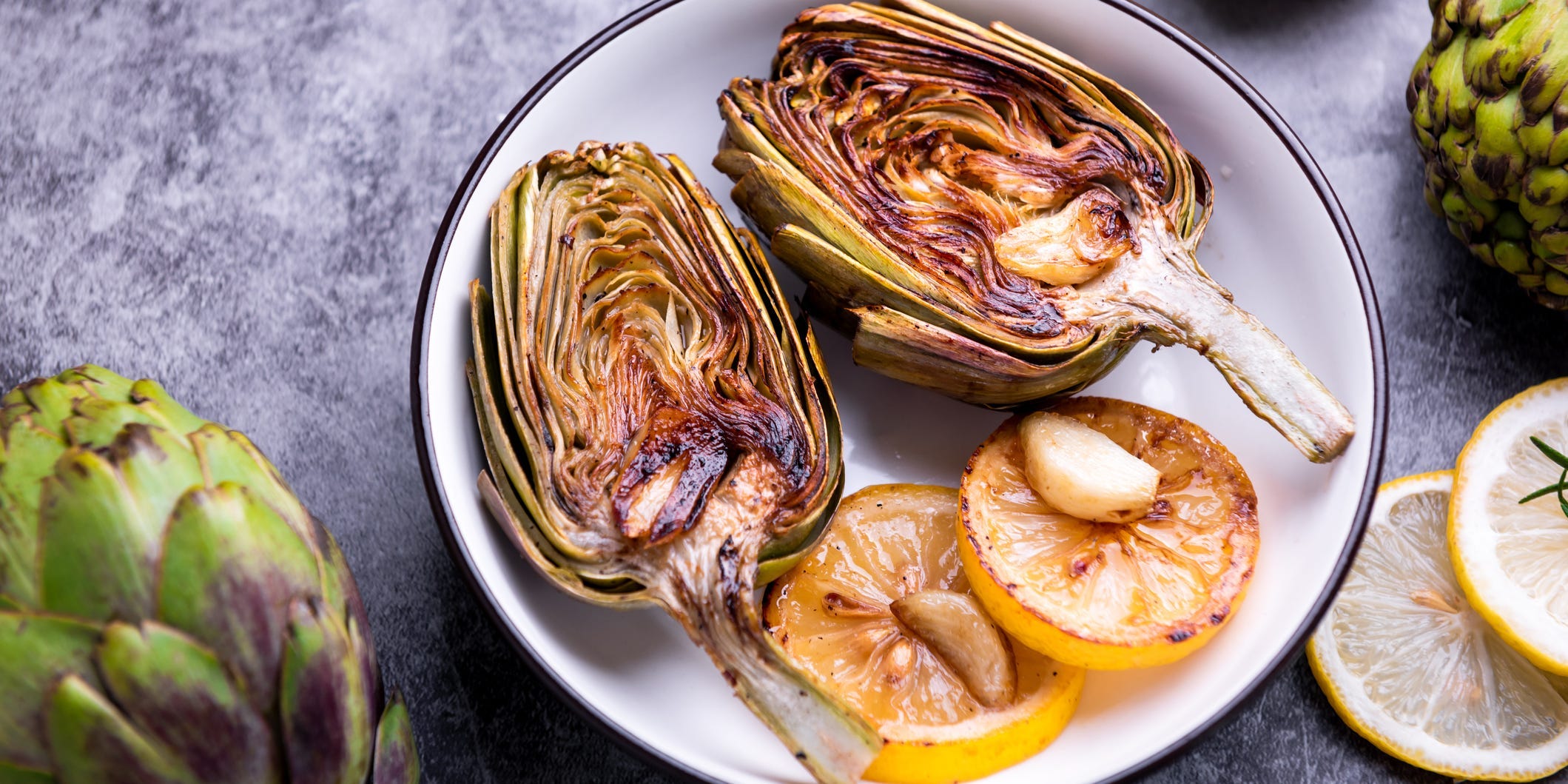
HUIZENG HU/Getty Images
- Preparing artichokes for cooking requires just a bit of cutting and peeling.
- Artichokes can be steamed, boiled, or roasted in the oven.
- You must remove the hairy choke inside the artichoke before eating, except in baby artichokes.
- Visit Insider's Home & Kitchen Reference library for more stories.
Seattle-based chef and owner of General Harvest Restaurants, Brian Clevenger, explains that artichokes are potentially one of the oldest vegetables around today. If you're a fan of vegetables like Brussels sprouts and asparagus, you'll probably also enjoy artichokes, he says.
Artichokes have a mild nutty flavor and a heart with a satisfying meaty texture. These tasty flower buds are the only edible portion of a species of thistle. In terms of the artichoke itself, the edible parts include the lower outer leaves, inner leaves, the heart, and the stem. Clevenger adds that in baby artichokes, the choke is also edible.
They're so unlike any other vegetable that many people avoid cooking and eating them because they expect the prep to be complicated. But with a bit of know-how, preparing and cooking artichokes can be quite simple – and rewarding for your taste buds.
Method 1: Steaming
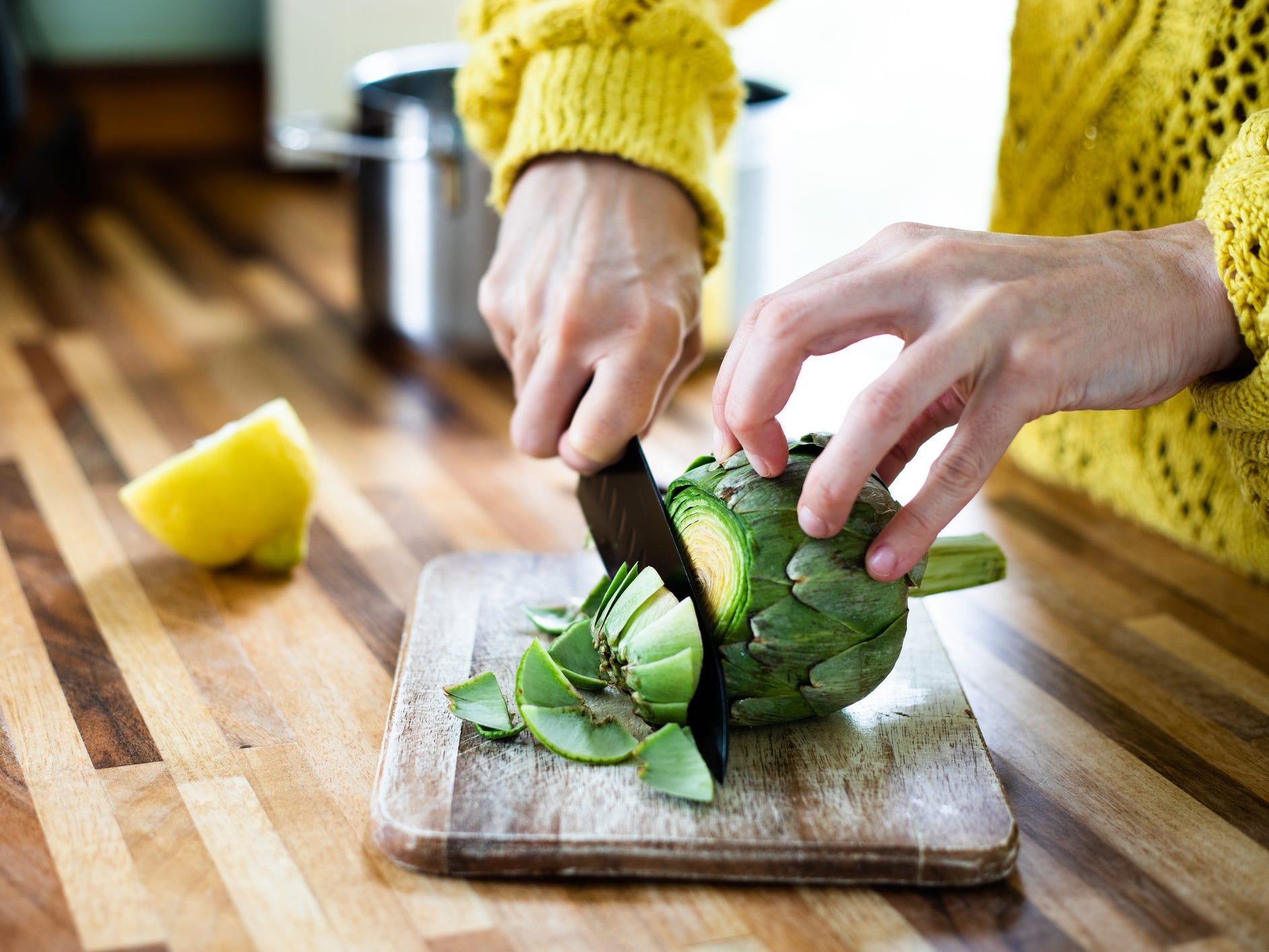
Basak Gurbuz Derman/Getty Images
According to Clevenger, steaming artichokes is probably the easiest way to prepare them.
1. Wash the artichokes. Rinse them off completely in the kitchen sink.
2. Cut the artichokes. Slice off the top third. You can toss this part into the compost.
3. Peel the artichokes. Peel off two to three layers of the tough outer leaves. Cut the stem and peel the remaining inch.
4. Place in a steamer basket and cook. Clevenger recommends steaming large globe artichokes for about 20 to 25 minutes. Smaller artichokes will take less time to cook through. You'll know they're done if you can easily pull off a leaf.
Method 2: Boiling
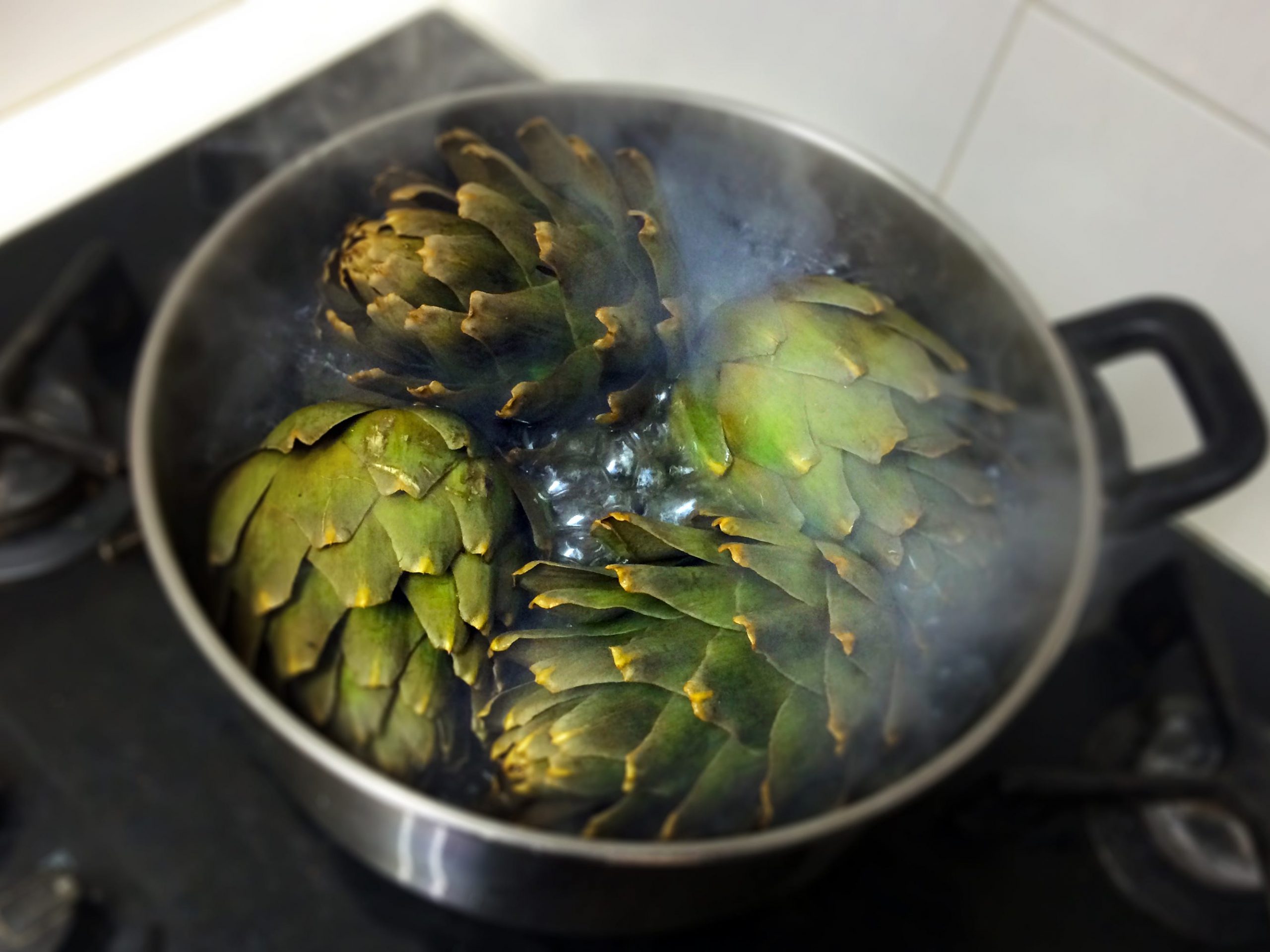
chameleonseye/Getty Images
"Think: the texture of canned artichokes with the flavor of freshly cooked," says Clevenger of the boiling method. This means they come out soft and ultra-tender. He likes to use this cooking method for baby artichokes. It also produces perfectly cooked artichokes that keep their color.
1. Wash your artichokes. Thoroughly wash them to remove dirt and debris.
2. Prepare a pot of water. Fill a pot with 4 quarts of water and squeeze in the juice of three lemons. Alternately, says Clevenger, you can use 2 tablespoons of citric acid instead of fresh lemon juice. This helps prevent browning.
3. Trim the artichokes. Remove the top third of the artichokes and the tough outer leaves. Cut the stems down to an inch and peel the remaining portion.
4. Add artichokes to cold water. Float a sheet of parchment paper on top of the water. This helps keep the artichokes submerged, says Clevenger.
5. Bring to a boil. For baby artichokes, remove the pot from heat as soon as the water begins to boil and place the entire pot in the fridge to cool. This method allows them to cook in the residual heat and keep their color. Boil larger globe artichokes for about 25 to 30 minutes. Artichokes are done when you can easily remove a leaf.
Method 3: Roasting
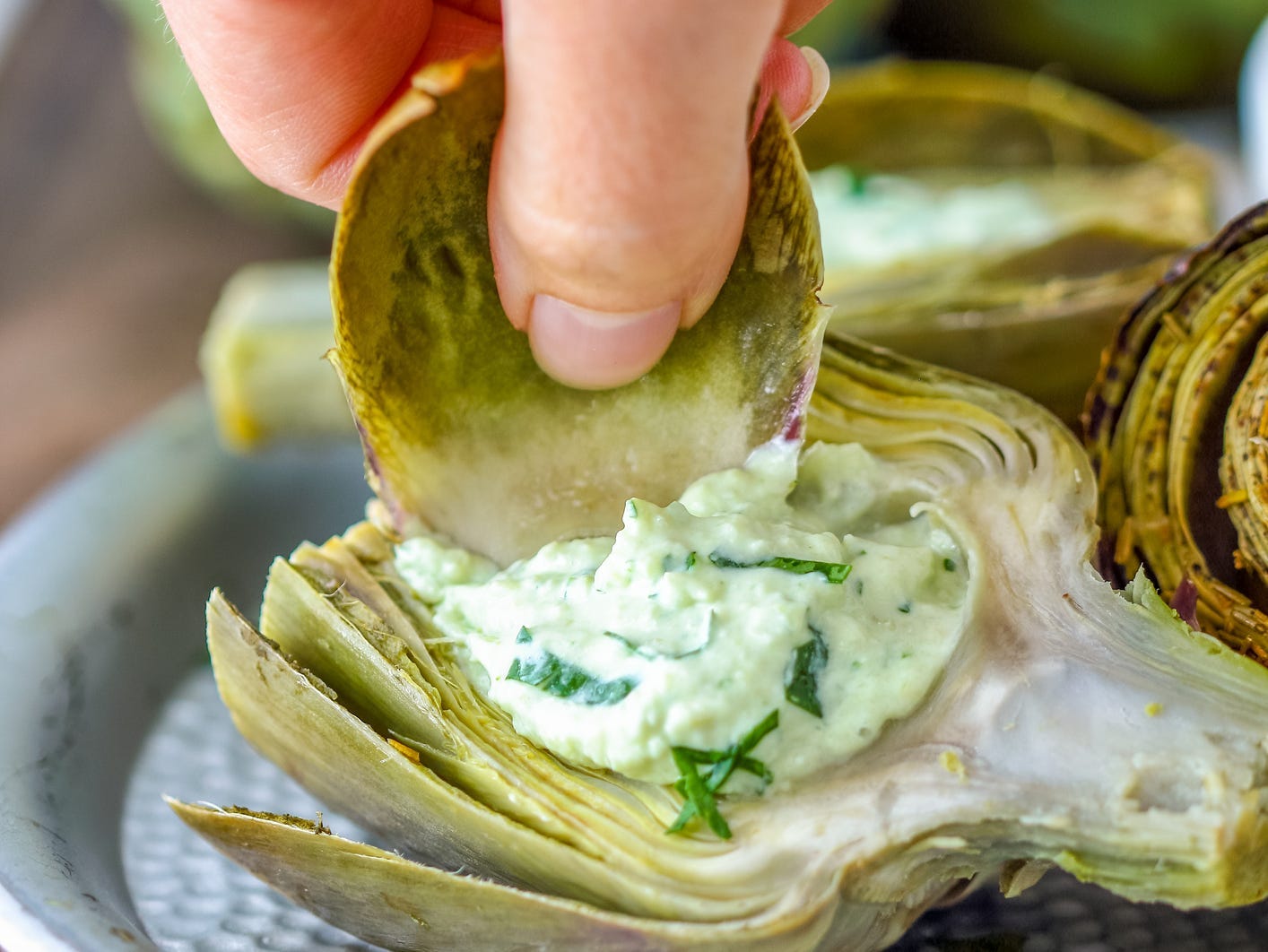
siims/Getty Images
The oven method, says Clevenger, is the best way to bring out the nuttiness of artichokes. You'll also get more of a crispy texture when roasting them.
1. Preheat the oven to 350 degrees Fahrenheit. Get the oven ready before prepping your artichokes.
2. Wash artichokes. Rinse off the artichokes to remove dirt and debris.
3. Cut the artichokes. Remove the top third of the artichokes and cut them in half to reveal the insides of the artichokes.
4. Remove the choke. This is the hairy, inedible part of the artichoke at the center. The easiest way to do this is with a serrated spoon. Remember, you don't have to remove the choke from baby artichokes.
5. Add oil and seasoning. Rub the artichoke halves with olive oil and season them with salt and pepper.
6. Roast in the oven for 5 to 10 minutes. Put the artichoke halves cut side down on a baking sheet and cook for up to 10 minutes for large globe artichokes.
7. Flip them. Turn over the halves. At this point, you can fill them with herbs, grated garlic, or breadcrumbs, says Clevenger.
8. Cover and cook. Continue cooking the artichokes until you can easily pull off the leaves - about 30 minutes. Cover with foil to prevent the artichokes from charring. He recommends finishing off the artichokes with a squeeze of fresh lemon juice before serving.
Tips and tricks for steaming artichokes
- Use a sharp knife. Regardless of the cooking method, when prepping artichokes, it's imperative to use a sharp, quality knife, says Clevenger.
- Season well. For steamed artichokes, the best time to season is after cooking. Clevenger's favorite seasonings include lemon juice, salt, and fresh basil. For dipping, use melted butter or aioli.
- Eat them, don't store them. Clevenger warns home cooks to avoid freezing fresh artichokes. You'll get the best results if you use them right away. The same goes for eating them. Eat artichokes on the same day you cooked them.
- Perfect pairings. You can enjoy cooked artichoke alone as a snack, but these veggies also go well with halibut, says Clevenger.
Insider's takeaway
Despite their intimidating appearance, artichokes are relatively simple to prepare. You can steam, boil, or roast them. Steaming and boiling both produce softer results, while roasting makes artichokes crispy. When eating artichokes, you need to remove the hairy choke (unless you're cooking baby artichokes) because it's inedible. And plan to eat artichokes right away. They don't keep well.
